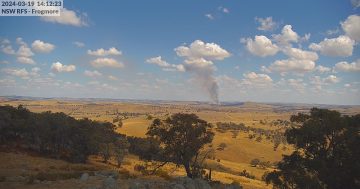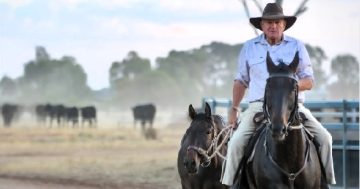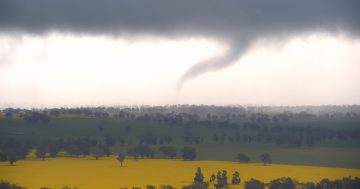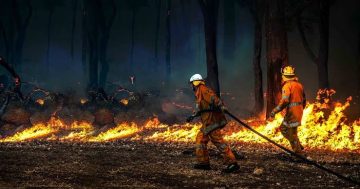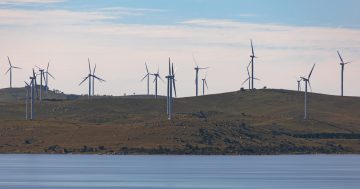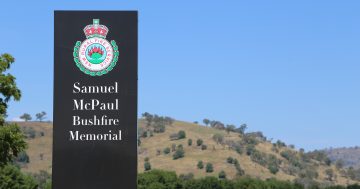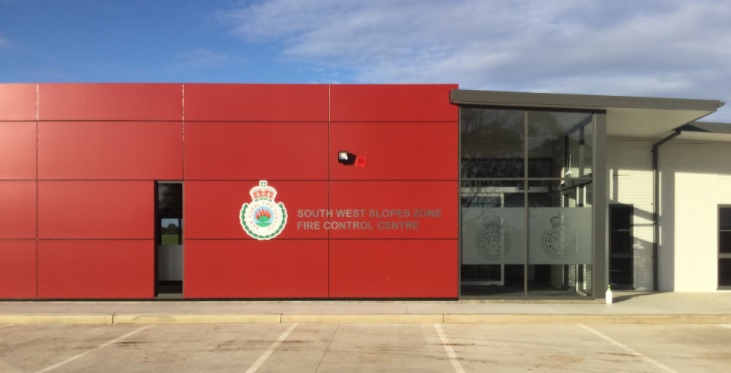
The final touches are being put on the new South West Slopes Fire Control Centre. Photo: Supplied.
A long-awaited $6.1 million purpose-built Fire Control Centre has brought NSW South West Slopes firefighting capabilities into the 21st century, allowing the region to start the bushfire danger period better prepared than ever.
It was a point reinforced at the opening by NSW Police and Emergency Services Minister David Elliott.
“While the previous FCC served the district well, I am confident this new state-of-the-art facility will prove itself to be an invaluable tool in managing fires in the South West Slopes and will be welcomed by the 30,000 residents who live within the district,” Mr Elliott said.
The striking new red and grey building now dominates the eastern approaches to Harden-Murrumburrah, starkly reminding residents of the months when they are all eyes to the horizon for the tell-tale plumes of smoke that signal danger.
But this is no ordinary building, as RFS South West Slopes Zone District Co-ordinator Inspector Tom McDevitt explained.
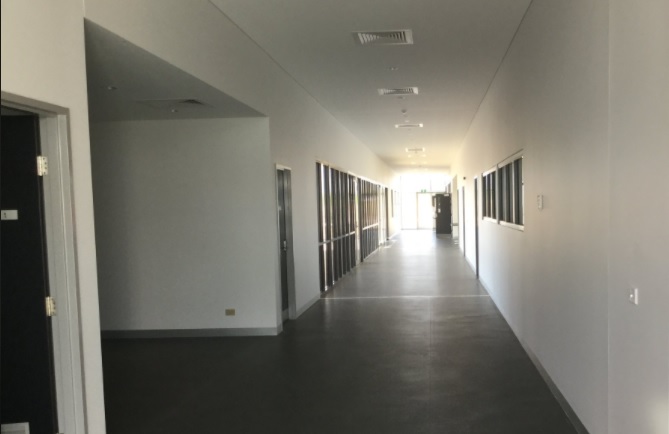
While the new facility predominately houses the NSW Rural Fire Service operations it has the capability to accommodate other emergency services and government agencies. Photo: Supplied.
“While the new facility predominately houses the NSW Rural Fire Service operations, it has the capability to accommodate other emergency services and government agencies,” he said.
“It also houses the emergency operations centre which we don’t have the capability to house in our current location. What that means, particularly for bushfires, is those other supporting agencies – Local Land Services (LLS), Department of Primary Industry (DPI), NSW Fire and Rescue, NSW Police, NSW Ambulance, National Parks and Wildlife Service (NPWS) – can all co-locate in the one building.
“We’re able to operate and function a lot better in the one building – that liaison is a lot closer.”
The new facility has the technology, space and functionality for up to 50 people to work together to lead and support emergency events, increase the level of safety and keep the community informed
Inside, front and centre, is the wall of knowledge. Like its state HQ counterpart, the wall links and displays all RFS operational information including the internal incident management system and weather, fireground, and predictive maps, which are also broadcast to the site’s training rooms.
In an emergency, Inspector McDevitt says this has everyone looking in one direction getting situational awareness without having to go and seek that out.
“What that means for a firefighting operation is we can keep a high tempo in the room but a low volume and low activity level, minimising disruptions to the operation,” he said.
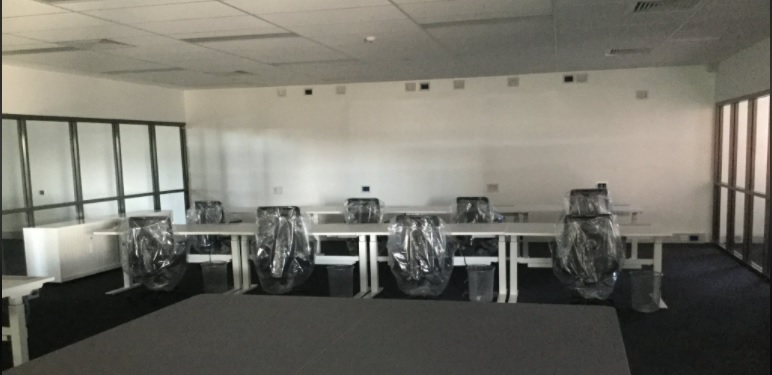
A knowledge wall with a series of television screens will allow emergency services teams to view weather, fire ground maps and predictive maps in one spot. Photo: Supplied.
Communications are also greatly enhanced.
“Presently we can only use three radios at once and now, with this new facility, we have the option to use multiple radios at once. It also allows us to put multiple agencies into the communications system which they haven’t had the ability to do up to this stage,” Inspector McDevitt added.
“We’ve made the [current] facility work … (but) the new FCC will give us far greater options to support our volunteer firefighting base on the ground and support other agencies.”
With the finishing touches still being taken care of, Inspector McDevitt said it was likely staff would move into the building in October.
As summer approaches, the South West Slopes Zone is facing its own set of challenges; a brilliant growth period for farmers and livestock producers but one that carries a heavy grass fuel load that many are hard pressed to keep at bay.
“We are aware of what fuel is out there and what we’re looking for and what we are asking people to do now is mow with traditional mowers or get a contractor in [to slash areas which cannot be mown],” he said.
He has asked that residents undertake home maintenance and consider asset protection zones for residential property and any outbuildings.
Inspector McDevitt said the forecast through to November indicated slightly cooler than average temperatures and slightly higher than average rainfall.
This season the RFS workforce is being reinforced with two fire mitigation crews based in Cowra and supporting firefighting efforts in the Western District and South West Slopes Zones..
The South West Slopes Zone takes in the Local Government Areas of Cootamundra, Harden, Young and Boorowa with some 50 Rural Fire Brigades within the zone under the leadership of NSW RFS district manager Andrew Dillon.







